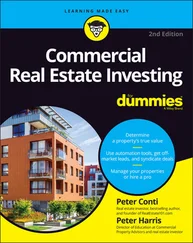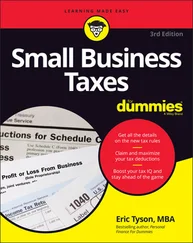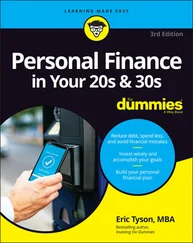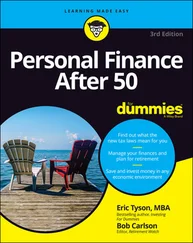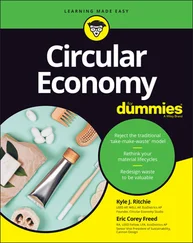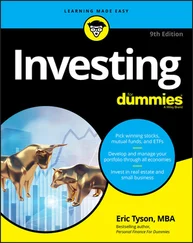I’ve worked with and taught people from widely varying financial situations, so I know the investing concerns and questions of real folks just like you. I’ve seen how important having healthy and strong personal finances and investments is.
I first became interested in money matters as a middle-school student when my father was laid off from his employer and received some retirement money. I worked with my dad to make investing decisions with the money. A couple of years later, I won my high school’s science fair with a project on what influences the stock market.
During my younger adult years, I worked hard to keep my living expenses low and to save and invest money so I could leave my job and pursue my entrepreneurial ideas. I accomplished that goal in my late 20s. I hope to give you some tools to help you make the most of your money and investments so you too can meet your goals and dreams.
This book is basic enough to help a novice get their arms around thorny investing issues. But advanced readers will be challenged as well to think about their investments and finances in a new way and identify areas for improvement. Check out the table of contents for a chapter-by-chapter rundown of what this book offers. You can also look up a specific topic in the index. Or you can turn a few pages and start at the beginning: Chapter 1.
No matter what your current situation is — whether you’re entering the job market right after high school, graduating college with substantial student loan debt, feeling pretty well established in your career, and so on — I thought of you as I wrote this book and made some assumptions about you:
You want expert advice about important investing topics such as getting a preinvesting financial checkup, understanding the range of investments available, and assembling a killer investment portfolio. And you want that advice quickly.
You want a crash course in investing and are looking for a book you can read cover to cover to help solidify major concepts and get you thinking about your investments in a more comprehensive way.
You’re tired of feeling overwhelmed by your investing choices and stressed out by the ever-changing economic and investing landscape, and you want to get more comfortable with your investment selections.
The icons in this book help you find particular kinds of information that may be of use to you:
 This light bulb marks strategy recommendations for making the most of your investments.
This light bulb marks strategy recommendations for making the most of your investments.
 This icon points out information that you’ll definitely want to remember.
This icon points out information that you’ll definitely want to remember.
 This icon marks things to avoid and points out common mistakes people make when making and managing their investments.
This icon marks things to avoid and points out common mistakes people make when making and managing their investments.
 This icon tells you when you should consider doing some additional research. Don’t worry — I explain what to look for and what to look out for.
This icon tells you when you should consider doing some additional research. Don’t worry — I explain what to look for and what to look out for.
In addition to the material in the print or e-book you’re reading right now, this product comes with a free access-anywhere Cheat Sheet that helps you get started with investing. To view this Cheat Sheet, simply go to www.dummies.com and enter “Investing in Your 20s & 30s For Dummies Cheat Sheet” in the Search box.
This book is organized so you can go wherever you want to find complete information. You can use the table of contents to find broad categories of information or the index to look up more specific topics.
If you’re not sure where you want to go, you may want to start with Part 1. It gives you all the basic info you need to assess your financial and investing situation and points to places where you can find more detailed information for improving it.
Part 1
Getting Started with Investing
IN THIS PART …
Define commonly used investing jargon, including explaining the different types of investments.
Use investments to accomplish your goals, such as making larger purchases, buying a home, and investing for retirement.
Understand expected investment returns and risks.
See how investment returns are taxed and what you can legally do to minimize your taxes on your investments.
Chapter 1
Making Sense of Your Investing Options
IN THIS CHAPTER
 Comparing common investments
Comparing common investments
 Explaining investment terminology — risks and returns
Explaining investment terminology — risks and returns
 Looking at the best investment companies and the rest
Looking at the best investment companies and the rest
 Deciphering the gobbledygook of professionals and credentials
Deciphering the gobbledygook of professionals and credentials
So many subject areas and disciplines are packed full of jargon. Some of this is the result of “progress” and advances, and some of it is caused by workers in the field not going out of their way to explain and define things.
In this chapter, I give you the lay of the land regarding the enormous numbers of investment choices and foreign-sounding terminology that await you in the world of investing. I also explain the types of companies that offer investments and their strengths and weaknesses. And should you want to hire some investing help, I detail the various professionals pitching their services to you and the common credentials they hawk to convince you of their expertise.
Growing Your Money in Ownership Investments
The most exciting thing about investing during your younger adult years is that you can be more aggressive with money that you’ve earmarked to help you accomplish long-term goals. To achieve typical longer-term financial goals, such as being financially independent (also known as retiring), the money that you save and invest generally needs to grow at a rate much faster than the rate of inflation. If you put your money in a bank account that pays little or no interest, for example, you’re more likely to fall short of your goals.
Ownership investments are investments like stocks, where you own a piece of a company, real estate, or a small business that has the capability to generate revenue and profits. Over the long term, consider ownership investments if you want your money to grow much faster than the rate of inflation and don’t mind more volatility in your investments’ values.
The downside to such investments is that they can fall more significantly in value than non-ownership investments (for example, bank accounts, bonds, and so on), especially in the short term. So don’t put money into ownership investments that you may need to tap in the short term for rent money or your next vacation. To reduce the risk of ownership investments, diversify — that is, hold different types of ownership investments that don’t move in tandem.
Читать дальше
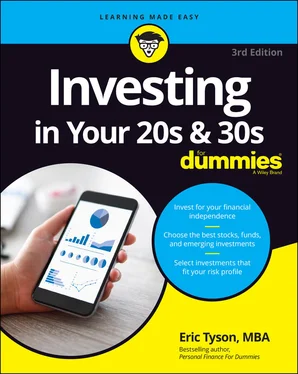
 This light bulb marks strategy recommendations for making the most of your investments.
This light bulb marks strategy recommendations for making the most of your investments. This icon points out information that you’ll definitely want to remember.
This icon points out information that you’ll definitely want to remember. This icon marks things to avoid and points out common mistakes people make when making and managing their investments.
This icon marks things to avoid and points out common mistakes people make when making and managing their investments. This icon tells you when you should consider doing some additional research. Don’t worry — I explain what to look for and what to look out for.
This icon tells you when you should consider doing some additional research. Don’t worry — I explain what to look for and what to look out for. Comparing common investments
Comparing common investments
